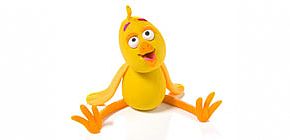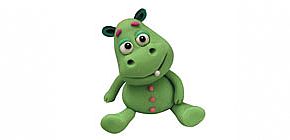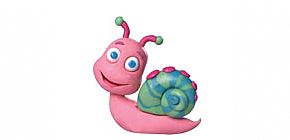Two-year-olds: Why Do They Cry?
 |
|
Age two is not an easy age for toddlers. At this age, toddlers have already developed motor and speech skills, which afford them much independence. This, coupled with the development of their new sense of self-awareness, enlightens the toddler as to their individuation from their parents.
But despite the development of their independence and individuation, toddlers are still helpless, can’t always explain their wills and are dependent on their parents in order to complete daily activities - a great source of frustration. Many parents report that their two-year-olds cry for no reason, sometimes to the point of vomiting, without being able to understand if their tots are in physical pain, or are simply acting out. Understanding the processes your children go through at this age will help you decipher their cries and provide appropriate responses and care in any situation.
#1 reason for crying: temper tantrums
Temper tantrums are a common phenomenon that stems from a sense of ongoing frustration, due to the gap between the toddler’s desire for independence and need to depend on their parents. Temper tantrums can take place in response to a parent’s refusal to give something to their child, or said parent’s attempt to initiate an activity, such as changing a diaper or getting their little one dressed.
While tantruming, anger overtakes the toddler and causes their uncontrolled outburst, hysterical crying, body part flailing and throwing themself on the floor. This is not an act the toddler chooses to do; they lack the ability to regulate their anger. They are not aware of what they are doing and are even shocked by the force of the emotions they display.
Coping with temper tantrums is no simple task for parents. On the one hand, many parents are interested in ending the “event” as quickly as possible. On the other hand, if the tot gets what they want by throwing a tantrum, they will likely repeat these actions in the future.
The most effective way to deal with temper tantrums is to keep calm, place clear boundaries and warmly support your toddler until it passes. To prevent temper tantrums from taking place, or minimize their effects, decide ahead of time which battles you’ll pick - and which you’ll concede. That way, you’ll avoid unnecessary battles. It is also important to maintain consistency and clarity and ensure the messages you give over to your toddler are age and capability-appropriate.
#2 reason for crying: Adaptation to change
Sometimes, during the night, toddlers physically respond to emotional events that took place throughout the day, such as: difficulty acclimating to a new daycare, moving to a new home, social distress and more. These emotional experiences can manifest as real pain, mainly stomach aches, headaches and leg pain. Many parents tend to think that since their child is completely healthy during the day, these pains are not physical, but rather are excuses used to delay bedtime. But two-year-olds are not pain experts. If, in addition to nighttime tears, your child’s daytime behavior starts to change, they experience disturbed sleep, vomiting, exceptional tiredness, or uncharacteristic alienation, you should look into taking your child for a behavioral consultation.
#3 reason for crying: Growing pains
After you’ve successfully passed the gas and teething stages, the next growth stage is growing pains. For the most part, growing pains are felt in the leg muscles and during the evening and nighttime hours. They come in waves and last roughly ten minutes at a time.
Growing pains do not cause fever, swelling, or any other external phenomena, but they can be quite intense. Growing pains are not one-time events, though their appearance is quite irregular. As such, your child might experience one or two days of growing pains, then by a pain-free week followed by an uncomfortable recurrence.
Growing pains are most common in active children who use their muscles a lot, but it is important to check out any pains with a doctor, to ensure they’re actually growing pains. Treatment usually involves massaging and warming the affected area, as well as using painkillers designed for use by toddlers.
During their first year of life, infants experience extremely fast-paced development. Within just a few months, they develop exceptional motor and ...
Have you ever heard of an infant massage course? You likely have; they’re everywhere. This is because infant massage responds to a broad physical ...
We all want our infants to develop and the internet is chock-full of developmental charts according to various infants ages. To encourage infant ...


.jpg)
.jpg)
.jpg)
.jpg)



.jpg)
.jpg)
.jpg)
.jpg)

.jpg)


.jpg)

.jpg)
Contact us